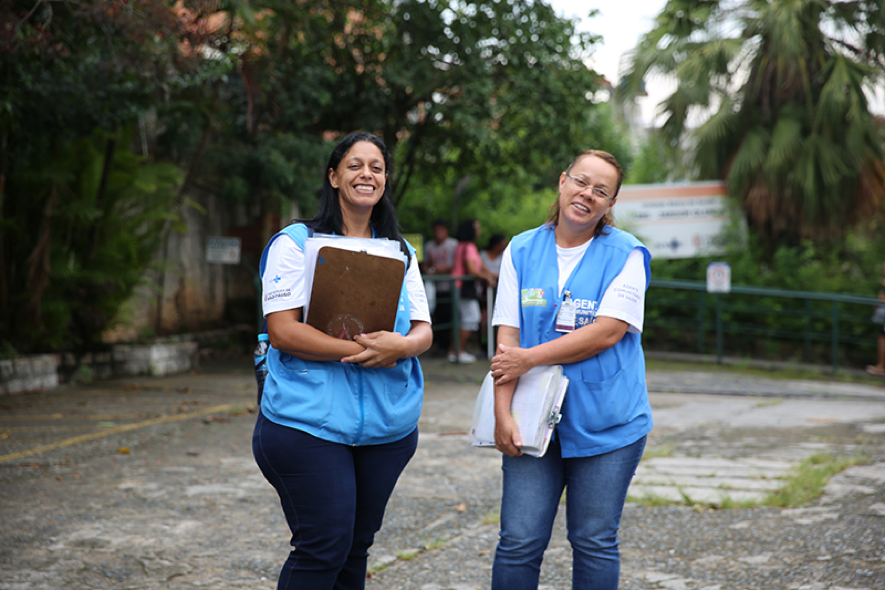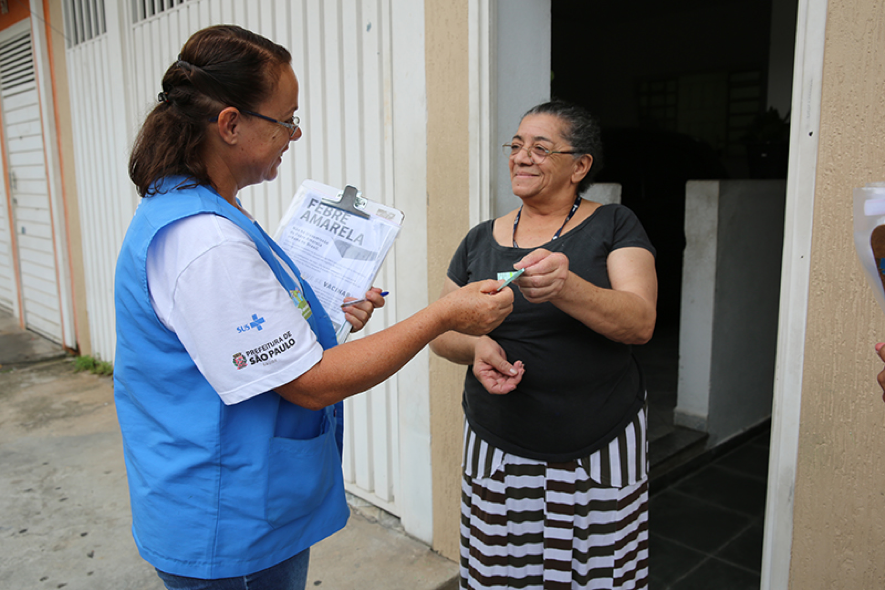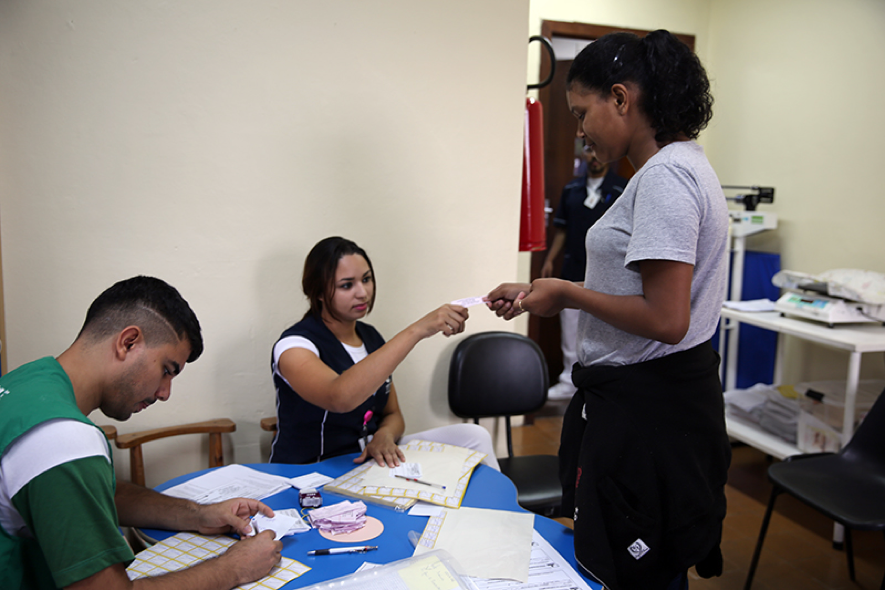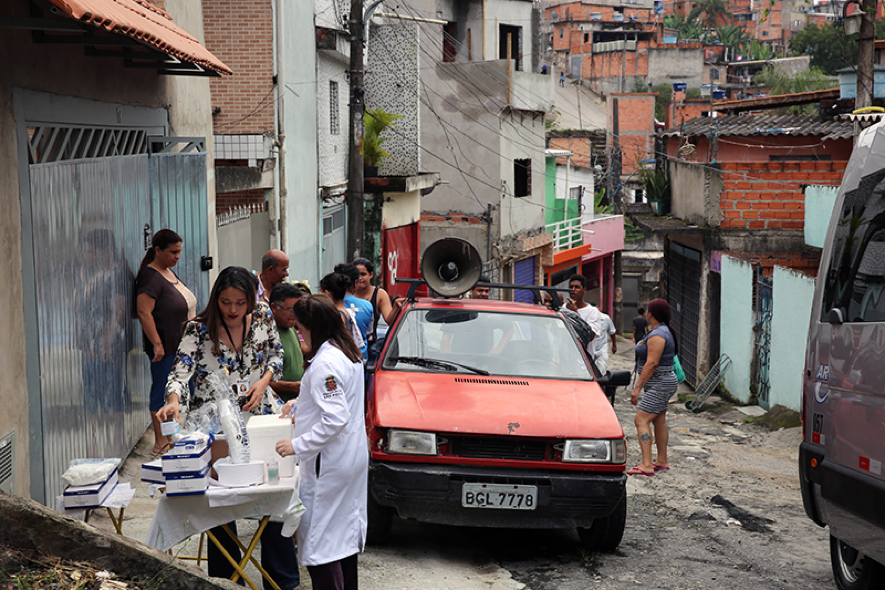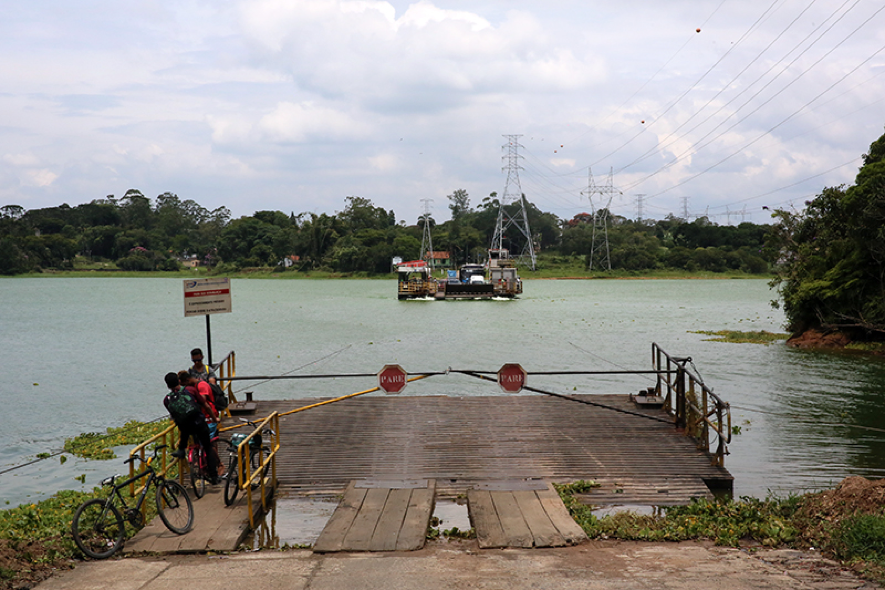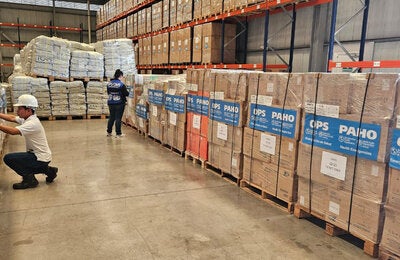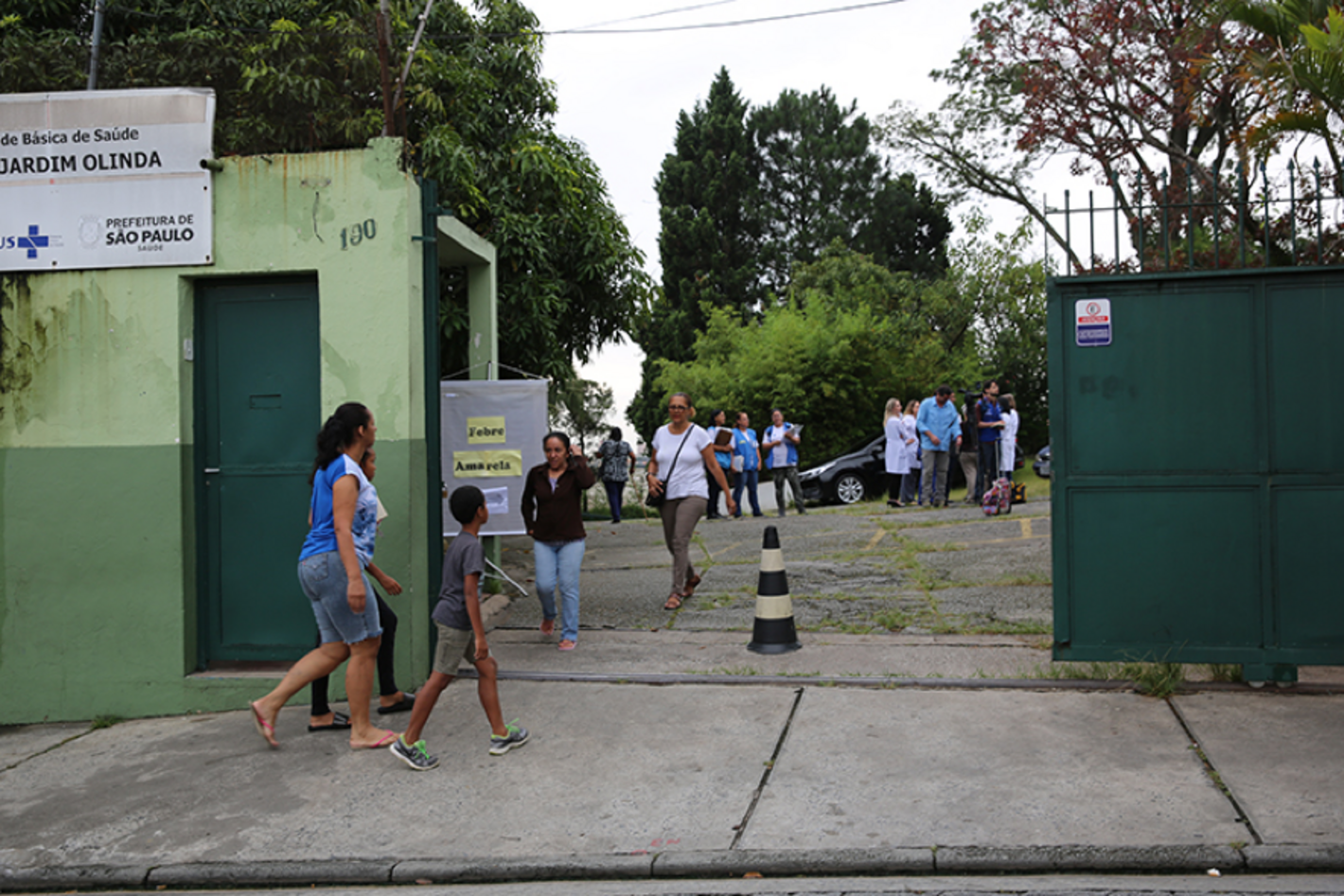
February 16, 2018 - An immunization campaign using both fractional and complete doses of the yellow fever vaccine is underway in the municipality of São Paulo, in more than 20 of the city's 96 districts. The strategy is part of a comprehensive vaccination plan developed by Brazil with support from the Pan American Health Organization (PAHO) and the World Health Organization (WHO).
To ensure an organized effort and to prevent long waiting lines, municipal health authorities distributed individualized cards to each household with an assigned date and time slot for family members to receive their vaccines. Wilson Pollara, São Paulo's municipal secretary of health, says the card system helped reassure residents that everyone would have access to the vaccine.
"At first, there were masses of panicked people-and really huge lines. But now people know when they will get vaccinated, on what day and in what facility."
The household cards-called senhas (Portuguese for 'password')-are delivered by community health workers like Irene Anunciação Pereira Silva and Vanuza Martins Cordeiro.
Community health workers set out from the primary care clinics where they normally work and walk door-to-door through the neighborhood to deliver the senhas and to provide information and check on residents who are under medical treatment or who need monitoring.
Once they receive an appointment card, residents can get vaccinated in the next few of days.
If they don't find someone at home or on the street, they leave a message with neighbors or return another day.
When community residents arrive at their scheduled time, a healthcare professional records their information and makes sure there is no reason they should not get vaccinated, for example, because they are immunocompromised or allergic to eggs.
If there are no contraindications, most people receive the fractional dose of the yellow fever vaccine. The exceptions are children aged 9 months to 2 years and people with special clinical conditions, who receive the standard dose.
The difference between the two types of dose is an issue of volume: the standard dose is 0.5 mL, which offers life-long protection; the fractional dose is 0.1 mL (one-fifth the standard dose) and provides immunity against the disease for at least 12 months and probably more (a study by the Brazilian research institute Fiocruz showed that the fractional dose provides eight years of protection). Dose fractioning is a way of stretching the supply of vaccines, protecting more people and reducing the possibility of disease spread.
Dose fractioning is a way of stretching the supply of vaccines, protecting more people and reducing the possibility of disease spread.
Another strategy to immunize as many people as possible is the mobile vaccination post. Healthcare professionals find a neighborhood resident who agrees to let them use part of their home to set up the mobile post. If that person is not at home on the agreed day, health workers knock on other neighbors' doors until they find someone else willing to open up their home.
Because contact is already frequent and common between community health workers and residents in São Paulo, it is not difficult to find someone who will agree to share their garage, hallway or other space to help the vaccination effort. In the few cases they cannot find a space, the healthcare teams provide vaccination from a van.
One of these mobile vaccine posts saved 19-year-old Juliana Oliveira da Silva from making an hour-long trip to take her 1-year-old daughter and her brother to get vaccinated in another part of town. The trip would have meant a lot of walking as well as a ferry ride. "I was already going to catch the ferry when I saw them here," said da Silva. "It was great."
The ferry carries pedestrians, bicyclists, people in cars and buses, and even people riding horses.The trip across the water takes about five minutes.
In mid-January 2018, WHO began recommending yellow fever vaccination for all international travelers heading for any part of the State of São Paulo. The vaccine should be administered at least 10 days before travel (the time it takes for the body to produce antibodies against the disease).

